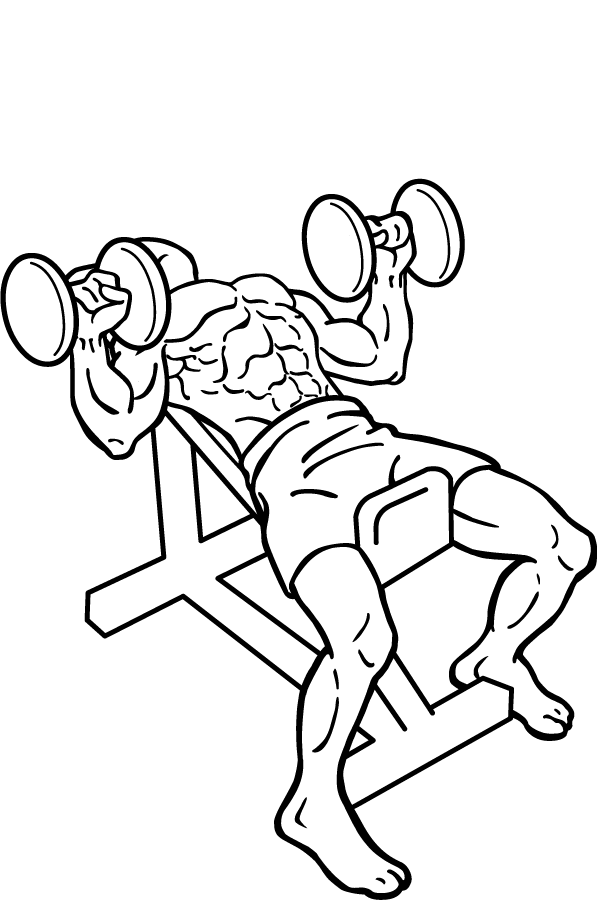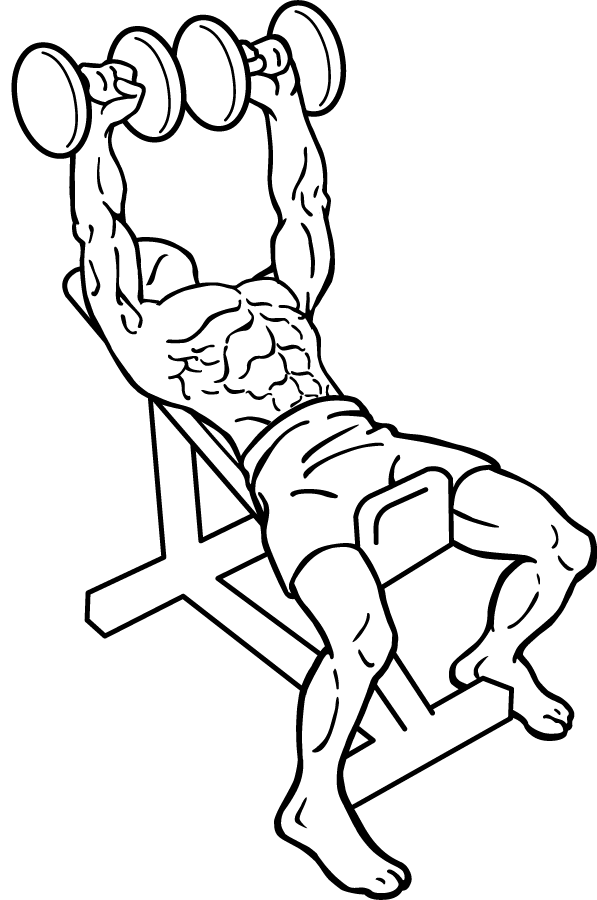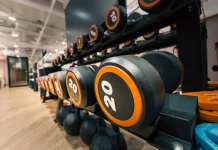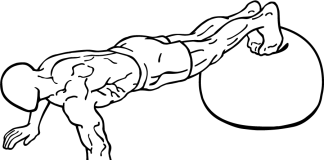Last Updated on October 23, 2024
The Incline Shoulder Press Dumbbell exercise is a fantastic way to build strength, enhance shoulder definition, and improve upper body stability. By incorporating an incline bench, this variation of the shoulder press provides a unique angle that targets the front and middle deltoids, helping you sculpt strong, well-defined shoulders. In this comprehensive guide, we’ll explore the technique, benefits, variations, and advanced tips to master the Incline Shoulder Press Dumbbell.
What is the Incline Shoulder Press Dumbbell?
The Incline Shoulder Press Dumbbell is performed using an incline bench, allowing you to press the dumbbells overhead while maintaining a slight angle. This positioning engages the shoulder muscles (deltoids) more effectively than flat or vertical positions, emphasizing the front and middle delts while also engaging the upper chest. It is a compound movement that activates multiple muscle groups, making it a staple in any upper-body workout routine.
Muscles Worked:
- Deltoids (Front and Middle Heads): The primary target, these muscles help lift and stabilize the arms.
- Triceps Brachii: Assist in extending the arms during the press.
- Upper Pectorals: The upper chest muscles are activated as a secondary muscle group.
- Stabilizer Muscles: Various muscles in the upper back and core assist in maintaining balance and posture throughout the movement.
Benefits of the Incline Shoulder Press Dumbbell
- Enhanced Shoulder Activation:
- The incline position specifically targets the front and middle deltoids, allowing for balanced shoulder development and strength.
- Improved Upper Chest Engagement:
- By pressing from an incline, the upper pectorals are also engaged, providing additional upper-body development.
- Versatility and Accessibility:
- This exercise can be modified by adjusting the bench angle or weight, making it suitable for both beginners and advanced lifters.
- Strengthens Core and Stabilizers:
- Maintaining balance during the press engages the core and upper back muscles, contributing to overall stability and posture improvement.
- Functional Strength Gains:
- Strengthening the shoulders translates to better performance in other upper-body movements like bench presses, overhead presses, and push-ups, making it an essential exercise for overall strength training.
How to Perform the Incline Shoulder Press Dumbbell Properly
Step-by-Step Guide:
- Set Up the Incline Bench:
- Adjust the bench to a 30–45 degree angle. This range is ideal for targeting the shoulders without placing too much emphasis on the upper chest.
- Position Yourself on the Bench:
- Sit down with your back against the bench and your feet flat on the floor for stability. Hold a dumbbell in each hand, resting them on your thighs.
- Lift the Dumbbells to Starting Position:
- Using your thighs for momentum, bring the dumbbells up to shoulder height with your elbows bent at a 90-degree angle. Your palms should face forward, and your elbows should be in line with your shoulders. This is your starting position.
- Press the Dumbbells Overhead:
- Engage your core and press the dumbbells upward until your arms are fully extended above your shoulders. Avoid locking your elbows; keep a slight bend to protect the joints.
- Control the Descent:
- Slowly lower the dumbbells back to the starting position, ensuring your elbows remain aligned with your shoulders. Focus on maintaining control throughout the descent to engage the shoulder muscles fully.
- Repeat for Reps:
- Aim for 3–4 sets of 8–12 reps, maintaining a controlled motion to maximize shoulder activation and muscle growth.
Common Mistakes to Avoid
Even though the incline shoulder press dumbbell is a straightforward exercise, there are common mistakes that can reduce its effectiveness or increase injury risk:
- Using Too Much Weight:
- Lifting heavier weights without proper form can lead to shoulder strain and compromise the movement. Start with a manageable weight that allows you to complete the exercise with full control.
- Arching the Lower Back:
- Keep your back in contact with the bench throughout the exercise. Arching your lower back reduces shoulder activation and puts unnecessary stress on your spine.
- Flaring the Elbows Outward:
- Your elbows should remain in line with your shoulders. Flaring them out too much can place undue stress on the shoulder joints and reduce the isolation of the deltoids.
- Locking the Elbows:
- Locking your elbows at the top of the press can strain the joints and reduce muscle engagement. Maintain a slight bend in your elbows to keep the tension on your shoulders.
- Rushing Through the Reps:
- Performing the movement too quickly diminishes the time under tension and reduces the exercise’s effectiveness. Focus on a slow, controlled tempo to maximize muscle activation.
Variations of the Incline Shoulder Press Dumbbell
To challenge your shoulders from different angles and increase the intensity, you can try several variations of the incline shoulder press:
- Single-Arm Incline Shoulder Press:
- Perform the exercise with one arm at a time. This variation enhances the mind-muscle connection and engages the core more to maintain balance.
- Incline Neutral-Grip Press:
- Hold the dumbbells with your palms facing each other. This neutral grip reduces shoulder strain and targets the deltoids differently, making it ideal for those with shoulder issues.
- Incline Shoulder Press with Bands:
- Incorporate resistance bands for added tension during the movement. Bands provide consistent resistance, enhancing muscle engagement throughout the range of motion.
- Alternating Incline Shoulder Press:
- Press one dumbbell at a time, alternating arms. This variation increases the challenge for stabilizer muscles and helps improve unilateral strength.
- Incline Shoulder Press with Twist:
- Rotate the dumbbells as you press upward, turning your palms inward at the top. This engages the shoulders from a new angle and enhances muscle activation.
Tips for Maximizing Your Incline Shoulder Press Dumbbell
- Warm Up Your Shoulders:
- Start your workout with dynamic stretches like arm circles, shoulder rotations, and band pull-aparts to prepare your shoulder joints and muscles.
- Engage Your Core:
- Tightening your core helps stabilize your body, preventing your lower back from arching and ensuring proper form throughout the exercise.
- Focus on the Eccentric Phase:
- Control the lowering phase (eccentric phase) of the press, taking 3–4 seconds to return to the starting position. This increases time under tension, promoting muscle growth.
- Mind-Muscle Connection:
- Visualize your shoulders lifting the weight and focus on feeling the contraction in your deltoids. Concentrating on the movement enhances muscle activation and results.
- Progressive Overload:
- Gradually increase the weight, reps, or sets over time to challenge your muscles and encourage growth. Progressive overload is essential for long-term shoulder development.
Incline Shoulder Press vs. Other Shoulder Exercises
To achieve balanced shoulder development, it’s important to understand how the incline shoulder press compares with other shoulder exercises:
- Seated Overhead Dumbbell Press: Performed with an upright bench, this exercise also targets the deltoids but lacks the incline angle’s emphasis on the front deltoid and upper chest.
- Standing Shoulder Press: Engages more stabilizer muscles due to the standing position, but the incline variation offers greater isolation and reduces momentum.
- Arnold Press: A dynamic shoulder exercise that involves rotation. Combining the Arnold press with the incline shoulder press can enhance overall shoulder development.
By incorporating different shoulder exercises, you can create a comprehensive routine that builds strength, stability, and muscle definition.
The Science Behind the Incline Shoulder Press Dumbbell
The incline angle activates the front deltoid muscles more effectively than a flat or upright press, providing a unique stimulus for muscle growth. Research shows that training the shoulders from various angles helps develop a more balanced and defined upper body. The incline position also recruits the upper pectoral muscles, making it a compound movement that maximizes muscle activation and strength gains.
Nutrition and Recovery for Shoulder Growth
To fully benefit from the incline shoulder press dumbbell, it’s important to pair it with proper nutrition and recovery:
- Protein Intake: Consume 1.6–2.2 grams of protein per kilogram of body weight daily to support muscle repair and growth.
- Carbohydrates: Incorporate complex carbs like quinoa, oats, and sweet potatoes to fuel your workouts and recovery.
- Hydration: Drink plenty of water to maintain muscle function and support recovery, especially before and after workouts.
- Sleep: Aim for 7–9 hours of sleep each night to allow your shoulder muscles to recover and grow.
Final Thoughts
The Incline Shoulder Press Dumbbell is an effective exercise for building strong, defined shoulders. By emphasizing the front and middle deltoids while engaging the upper chest, this movement offers a balanced approach to upper-body development. Whether you’re a beginner learning the basics or an advanced lifter seeking more shoulder growth, this exercise can elevate your workout routine.
Focus on proper technique, avoid common mistakes, and progressively challenge yourself to see the best results. With consistent training, balanced nutrition, and proper recovery, you’ll be well on your way to building powerful, sculpted shoulders.







